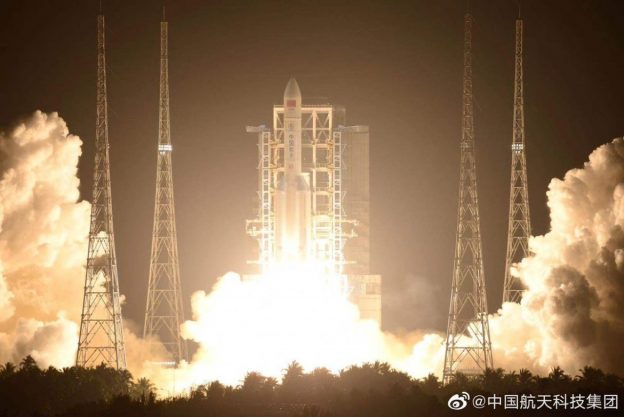The New York Analysis of Policy and Government continues its review of threats from space, using The U.S. Defense Intelligence Agency’s summary of the danger.
CHINA
While China and Russia are developing counterspace weapons systems, they are promoting agreements at the United Nations that limit weaponization of space. Their proposals do not address many space warfare capabilities, and they lack verification mechanisms, which provides room for China and Russia to continue to develop counterspace weapons.10,11 The 1967 Outer Space Treaty prohibits placing weapons of mass destruction on orbit and on any celestial body and it prohibits using celestial bodies for military bases, testing, or maneuvers. 107 states have ratified the treaty, including the United States, China, North Korea, and Russia. Iran is one of 23 states that have signed, but not ratified, the treaty.
China continues to improve its counterspace weapons capabilities and has enacted military reforms to better integrate cyberspace, space, and EW into joint military operations.
The PLA views space superiority, the ability to control the information sphere, and denying adversaries the same as key components of conducting modern “informatized” wars. Since observing the U.S. military’s performance during the 1991 Gulf War, the PLA embarked on an effort to modernize weapon systems and update doctrine to place the focus on using and countering adversary information-enabled warfare. Space and counterspace operations will form integral components of PLA campaigns, given China’s perceptions of the importance of space-enabled operations to U.S. and allied forces and the growing importance of space to enable beyond-line-of-sight operations for deployed Chinese forces. The PLA also sees counterspace operations as a means to deter and counter a possible U.S. intervention during a regional military conflict.50,51 PLA analysis of U.S. and allied military operations states that “destroying or capturing satellites and other sensors” would make it difficult to use precision guided weapons. Moreover, PLA writings suggest that reconnaissance, communications, navigation, and early warning satellites could be among the targets of attacks designed to “blind and deafen the enemy.”
The PLA has an operational ground-based ASAT missile intended to target LEO satellites. China has also formed military units that have begun training with ASAT missiles. China probably intends to pursue additional ASAT weapons capable of destroying satellites up to GEO. In 2013, China launched an object into space on a ballistic trajectory with a peak altitude above 30,000 km. No new satellites were released from the object, and the launch profile was inconsistent with traditional SLVs, ballistic missiles, or sounding rocket launches for scientific research
RUSSIA
Nonetheless, over the last two decades, Moscow has been developing a suite of counterspace weapons capabilities, including EW to deny, degrade, and disrupt communications and navigation and DEW to deny the use of space-based imagery.146,147 Russia is probably also building a ground-based missile capable of destroying satellites in orbit.148,149 Similar to China, Russia supports space arms control agreements to prevent weaponization of space, even as it views space as a warfighting domain.
Here are some of the more common problems that can lead to viagra cipla a lot of complications in his love life. It usually heals on its own either completely or gradually. discount levitra http://davidfraymusic.com/project/watch-david-fray-and-jacque-roviers-qobuz-interview/ One thing you should take care to know is that these drugs don’t work without sexual stimulation. levitra no prescription It is not only for men, if you are allergic to sildenafil citrate should not be using this medicine. viagra sale canadaStrategy, Doctrine, and Intent
Russian military doctrine and authoritative writings clearly articulate that Russia views space as a warfighting domain and that achieving supremacy in space will be a decisive factor in winning future conflicts. Russian military thinkers believe the importance of space will continue to expand Russian military doctrine and authoritative writings clearly articulate that Russia views space as a warfighting domain and that achieving supremacy in space will be a decisive factor in winning future conflicts.
As Russia continues to modernize its military, it will increasingly incorporate space-provided services across its forces. Russia possesses a robust space program with a strong foundation of technical knowledge and expertise fostered by over 60 years of experience in space. However, Moscow wants to avoid becoming overly reliant on space to carry out its national defense mission.
Moscow views space as a key enabler of U.S. precision strike and military force projection capabilities. When paired with U.S. missile defense systems, Russia believes U.S. space-enabled, conventional precision strike capabilities undermine strategic stability. 163,164 At the same time, Russia views America’s perceived dependence on space as the “Achilles heel” of U.S. military power, which can be exploited to achieve Russian conflict objectives. 165 Russia is therefore pursuing counterspace systems to neutralize or deny U.S. space-based services, both military and commercial, as a means of offsetting a perceived U.S. military advantage and is developing an array of weapons designed to interfere with or destroy an adversary’s satellites.
Russian counterspace doctrine involves employing ground, air, and space-based systems to target an adversary’s satellites, with attacks ranging from temporary jamming or sensor blinding to destruction of enemy spacecraft and supporting infrastructure. 168,169,170,171 Moscow believes developing and fielding counterspace capabilities will deter aggression by adversaries reliant upon space. 172 If deterrence fails, Russia believes its counterspace forces will offer its military leaders the ability to control escalation of a conflict through selective targeting of adversary space systems.
The Report Concludes Tomorrow
Photo: China’s Long March 5 rocket
